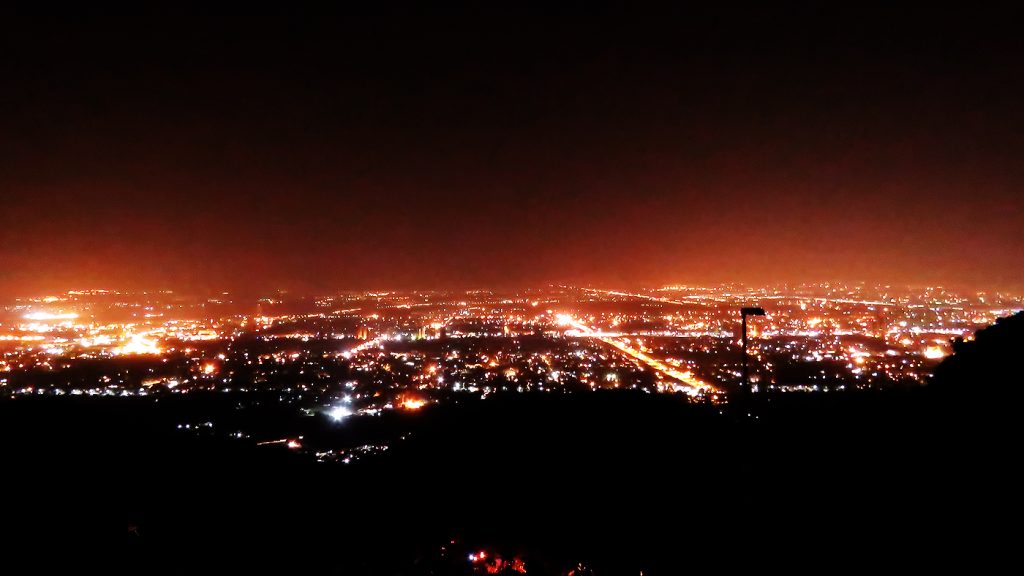Protests Toppled Incumbents in Bangladesh and Sri Lanka, while Pakistan Struggles for Change
Since March 2022, anti-regime movements articulating demands for political change have emerged in South Asia. These movements share a frustration among younger populations increasingly dissatisfied with the status quo. In Bangladesh and Sri Lanka, protests successfully led to the removal of incumbents, while Pakistan continues its struggle for change. What explains the relative success of anti-regime movements in Sri Lanka and Bangladesh compared to Pakistan?
A common base of grievances
Together Bangladesh, Sri Lanka, and Pakistan are home to 442 million people. The demographic reality in these countries, with median age as low as 25.3, plays a crucial role in the growing unrest. High inflation, unemployment, and an increasing demand for equitable resource distribution have exacerbated public discontent. Weak rule of law and clientelist political systems, which primarily serve a small elite, further deepen the grievances of the population.
Additionally, external factors, such as the COVID-19 pandemic and the war in Ukraine, had a disproportionately severe impact on these countries already struggling with deep-rooted structural issues in their economies. While Bangladesh fared only slightly better than Pakistan and Sri Lanka, its textile industry, which accounts for 85% of the country’s exports, suffered. The Transformation Index BTI 2024 states that 18.5% of Bangladeshis fell into poverty for the first time as a result of the pandemic while well-connected individuals with ties to the government managed to increase their wealth.
Public anger triggered protests in June 2024 when, in an instance of allegedly awarding party loyalists, the former Hasina government increased the share of government jobs for families of Bangladesh’s freedom fighters. High levels of foreign debt and unavailability of food supplies and fuel caused initial tensions against the government in Sri Lanka that cascaded later into a broader movement when President Gotabaya Rajapaksa refused to assume responsibility for the crisis. In Pakistan, decades of mismanagement in the energy sector led to skyrocketing utility bills – even surpassing rent costs for many households – and substantially eroding the purchasing power of the middle class.
This economic crisis dovetails with serious political instability in Pakistan. A fraudulent election in February 2024, and prejudicial decisions against Pakistan’s leading opposition party in the Supreme Court and Election Commission have further intensified public anger against pliant political parties and the country’s dominant military. Multiple protest waves since 2022 mainly focusing on state repression and electoral fraud have used a combination of street-based and institutional resistance but fell short of both meeting their demands and toppling incumbents.
The Pakistani protests
Despite sharing a common base of grievances, the anti-regime movements in Bangladesh, Sri Lanka, and Pakistan have significant differences affecting the outcomes they have engendered. In Pakistan, the opposition party Pakistan Tehreek-e-Insaf (PTI) is at the forefront of anti-regime protests targeting the military-backed government’s poor economic performance while demanding electoral fairness. Despite the arrests of party leader and former prime minister Imran Khan as well as nearly 7,000 party workers, PTI remains a solid opposition force. Since 2022, the party has challenged media blackouts, enforced disappearances and unwarranted arrests of its members, and a stolen election, in courts, public rallies, as well as on social media. Although PTI enjoys widespread public support and large numbers of people attend its rallies despite the absence of Imran Khan, who remains in jail, their resistance is leader-led owing to the emergence of a new leadership base in the party after many former senior leaders left it under military’s pressure and inducements. These new leaders keep party sympathizers engaged and grievances – about the economy, Khan’s arrest, election rigging, and state repression – relevant.
Differences between Pakistani, Bangladeshi, and Sri Lankan protests
The autocratic ambitions of Sheikh Hasina and the Rajapaksas had significantly crippled opposition parties’ ability to organize in Bangladesh and Sri Lanka. Therefore, anti-regime protests in these countries in 2024 and 2022 were leaderless. Common people emerged at the frontlines of protests as political parties failed or were unable to challenge the regime.
Second, while the protest movements in Bangladesh and Sri Lanka were relatively pointed in their demands, the one in Pakistan is relatively broad. On the other hand, the PTI’s ability to survive and establish its relevance in the face of a massive state crackdown ensures that the anti-regime sentiment in Pakistan does not spill over onto the streets in the manner of Bangladesh and Sri Lanka. The Pakistani political and military elite desire a crushed opposition, but they overlook the stabilizing effects of channeling public discontent through a popular opposition party, which ensures that protests, while building pressure, remain controlled.
A third difference pertains to the ethnic makeup of society in these countries. As many as seven major ethnic groups are politically relevant in Pakistan and have issues, demands, sub-cultures, and ideological leanings that may not always intersect. Furthermore, the differing nature of each group’s relationship with each other undercuts organic cross-ethnic alliances due to high suspicion of other groups.
In Bangladesh, political divergences rooted in ethnic cleavages are drastically reduced as it is a Bengali-majority country. In Sri Lanka, animosities between the Sinhala majority and Tamil minority caused a civil war, but frustration with the Rajapaksa family that lay at the heart of the 2022 protests, transcended this ethnic divide.
In Pakistan, the PTI is largely seen as a political party that enjoys a broad-based appeal characteristic of federalist parties. In rallies across Pakistan, the PTI has pulled large crowds from different ethnic groups. The arrest of party leader Imran Khan in May 2023 sparked large-scale protests across Pakistan in which people from different ethnicities participated. These developments suggest that ethnic barriers can be surmounted with universalist claims and politics. However, the unifying diversity of PTI’s appeal is most visible in cities, where ethnic identification is relatively secondary to material enhancement anyway.
Protesters are also different across the three countries. The anti-Hasina movement in Bangladesh was led predominantly by university students, who seem to be highly organized in peer networks where they socialize and train in protest activity. In Bangladesh, university students have contributed significantly to most large protest movements throughout the country’s history, but especially since 2013. In Sri Lanka, an engaged middle class, as well as mobilization on social media, played a crucial role in radically shifting the scale of the anti-Gotabaya protests based initially in peasant communities. In Pakistan, most major protests since 2007 have been led by political parties or occupational groups, such as lawyers. Notwithstanding sporadic protests against fee hike or administrative harassment, students and teachers in Pakistani public universities have largely ignored significant social and political issues in recent years. Although young leaders, such as Manzoor Pashteen and Dr. Mahrang Baloch, have successfully led thousands of people from their communities against state repression, their movements are embedded in horizontal social networks based primarily on ethnic- and issue-based solidarity as opposed to student or occupational groups who connect and exist foremost as pressure groups and may not necessarily arise out of existing issues, but to raise new issues and shape public opinion on them.
The role of the military
Another key distinction is the role of the military: in Pakistan, the military maintains a dominant role in politics, supported by civilian allies, while in Sri Lanka and Bangladesh, authoritarian rule has been fronted by civilian leaders. While Pakistan draws on a long history of popular resistance against military rule, military interference since 2007 has been discreet as opposed to direct. Furthermore, all political parties in Pakistan have buttressed military ingress in politics and continue to do so. Pakistan’s political parties have also miserably failed to develop a consistent stance on civil-military relations. From the perspective of the protester, these civil-military power alliances of convenience muddy the terrain by obfuscating a singular, clear entity to pin blame on (such as only the Awami League in Bangladesh and only the Rajapaksas in Sri Lanka).
Are Pakistani protests failing?
Across Pakistan, Bangladesh, and Sri Lanka, a shared desire for systemic change is evident. The populations in these countries perceive existing political structures as rigged in favor of a select few, often controlled by authoritarian elites. In all three countries, attempts to manipulate information flows in the digital age have failed, as social media continues to be an outlet for political engagement, despite government efforts to restrict access. While Sri Lanka and Bangladesh now seek new political orders, what hope does Pakistan have?
In Pakistan, the PTI’s platform of “change” has long been central to its political appeal. Founded in 1996, the party gained significant political momentum after a major rally in 2011. In 2018, PTI formed a coalition government at the national level, with Imran Khan as prime minister. Khan, often criticized by opponents as “selected” by the military, later distanced himself from the military establishment after being ousted in April 2022 through a controversial vote of no confidence. Despite Khan’s subsequent imprisonment, PTI successfully mobilized its supporters and won most seats in the February 2024 election that have been denied to the party.
The military, once a dominant force in Pakistani politics, is increasingly seen as responsible for the many failures in the country, weakening its grip on power. The current crisis has destroyed the military’s image as a “symbol of the federation” and a source of stability in a country fractured by ethnic fault lines. As disillusionment with the military grows, a new consensus on the significance of political parties as institutions of interest aggregation is slowly emerging. This may be by far the PTI’s biggest victory.
First published on Global Policy.


